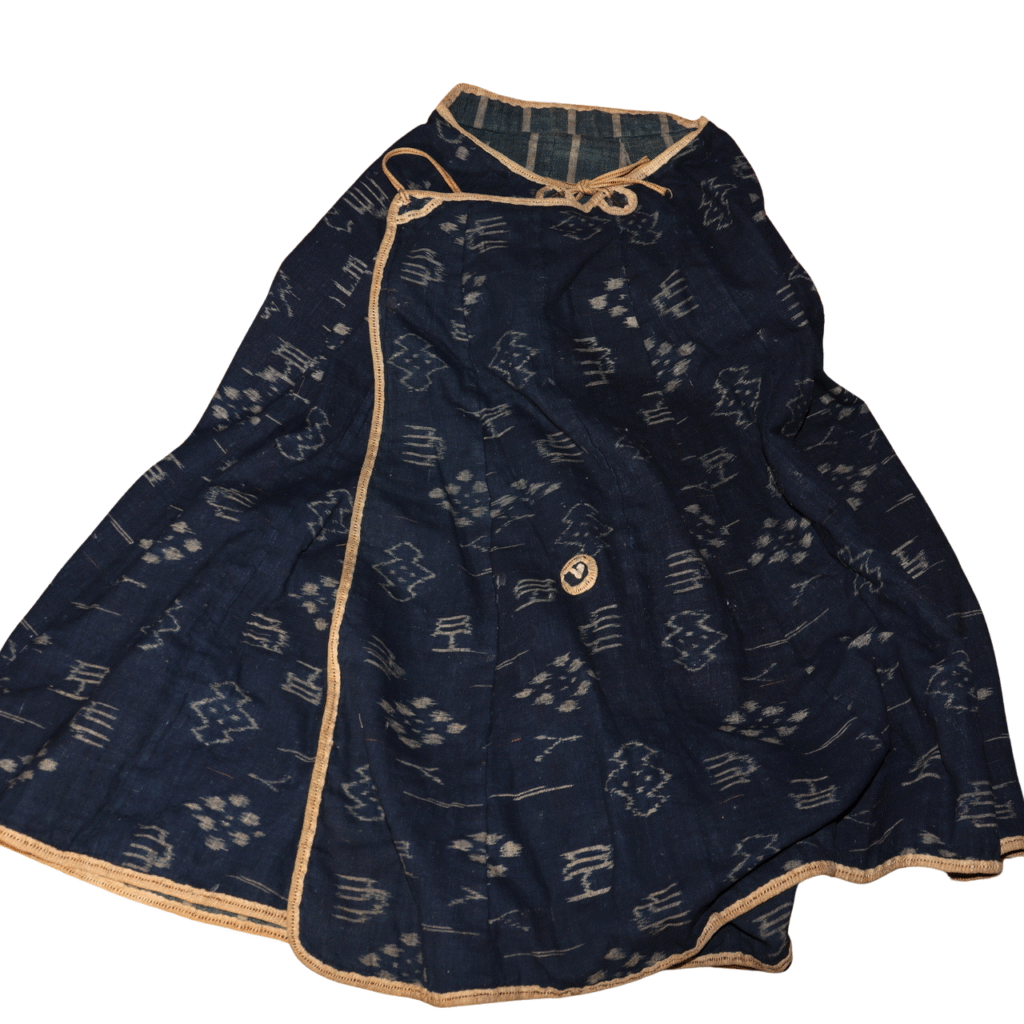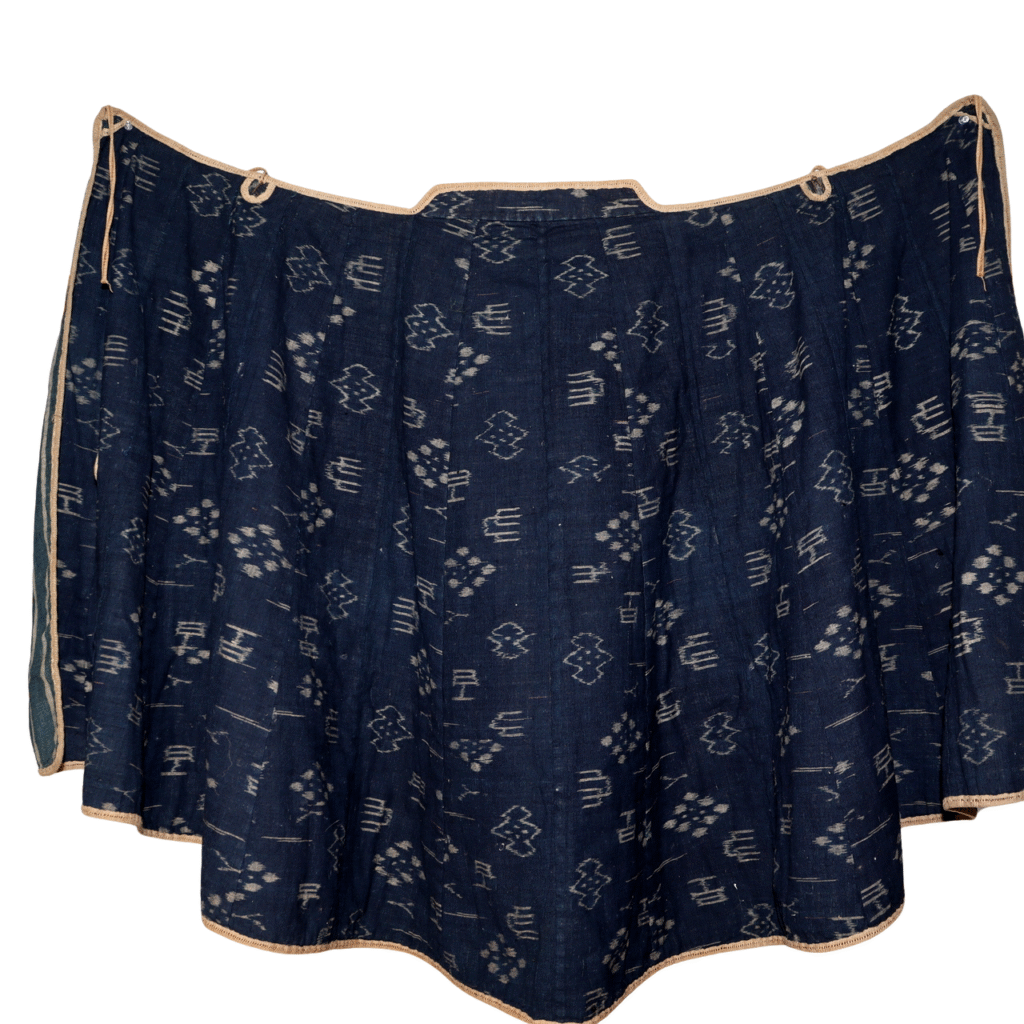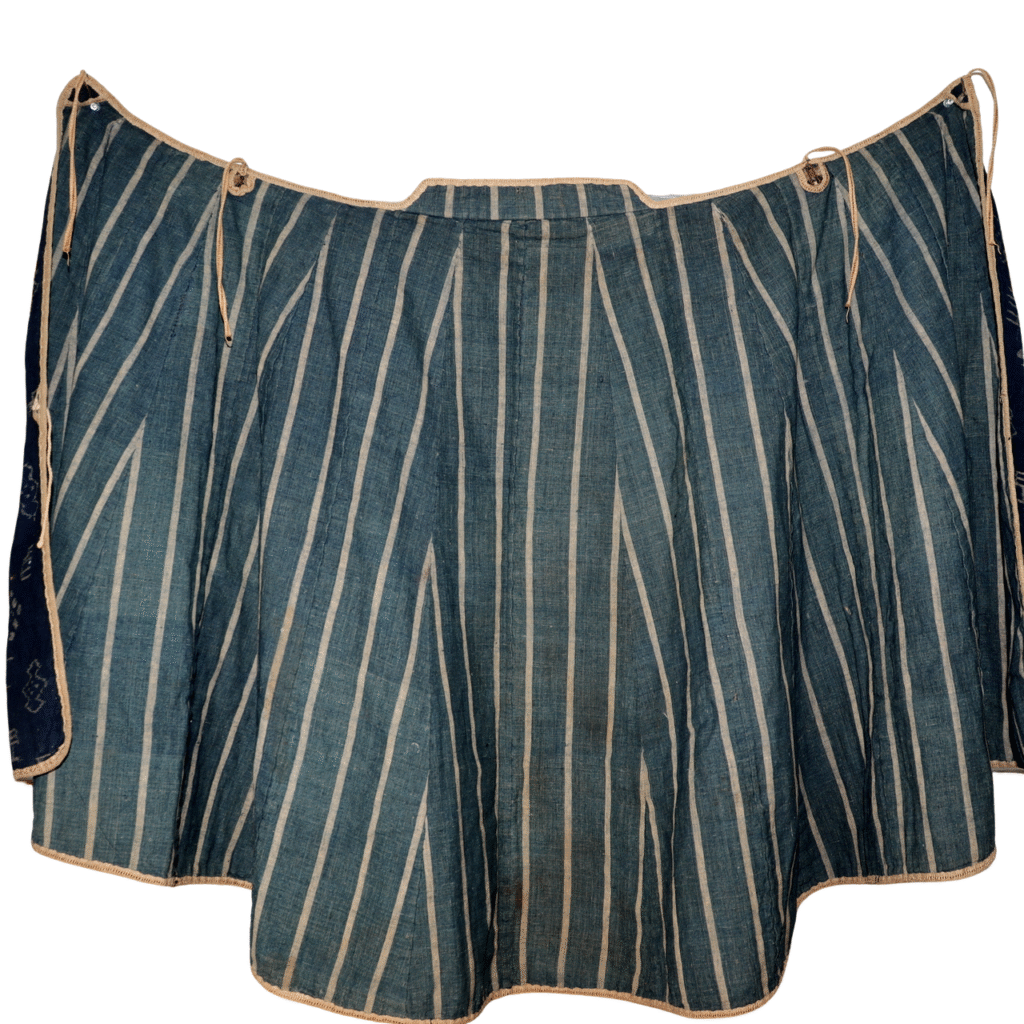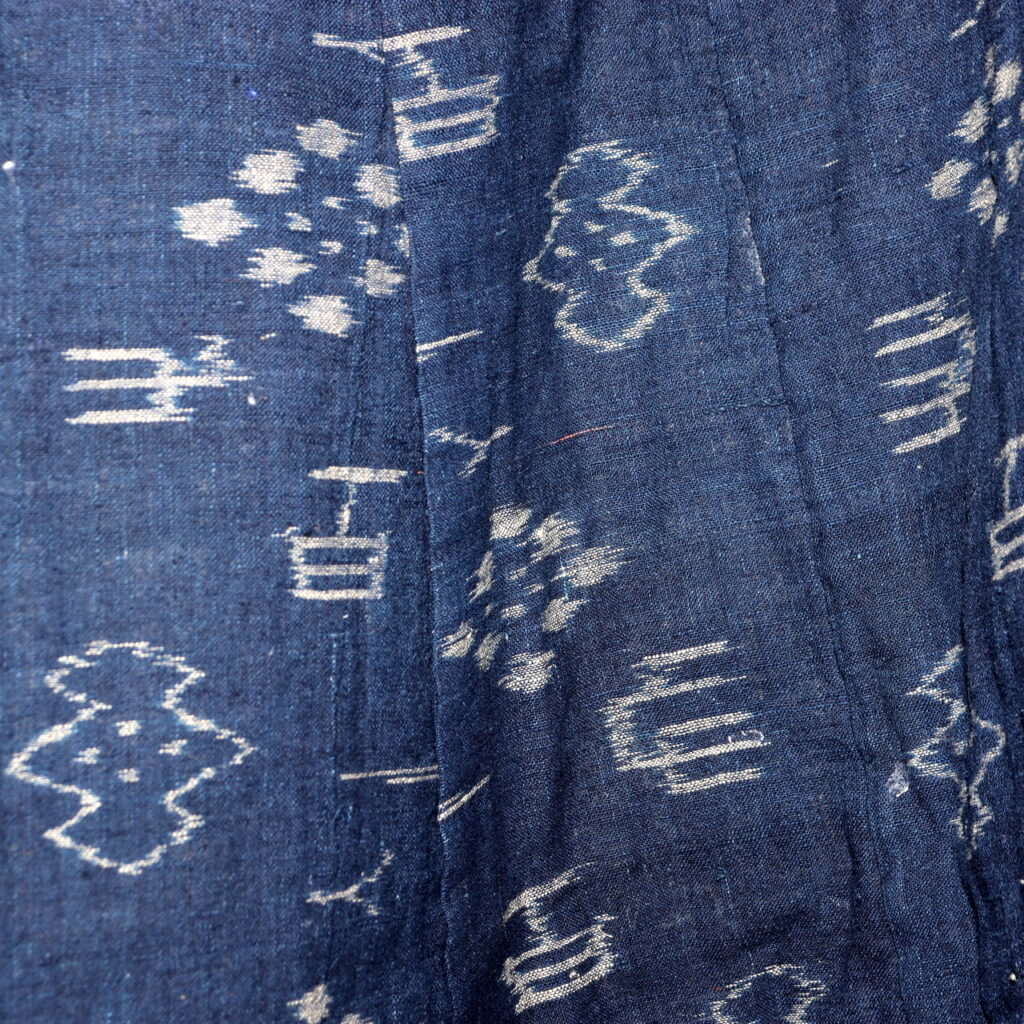





Among the most evocative pieces of Japanese antiques are garments that have endured not just time, but the elemental rigors of life on the road. This hand-stitched Dochu Gappa—a traditional Japanese travel raincoat from the late Edo period—is more than outerwear. It is a cultural artifact woven with stories of endurance, resourcefulness, and wabi-sabi aesthetics.
The Story Behind the Coat: Utility Woven with Heritage
During Japan’s Edo period (1603–1868), travel was common among pilgrims, merchants, and official couriers. Roads like the Tokaido bustled with foot traffic, and protection against the elements was essential. Enter the Dochu Gappa—a lightweight raincoat typically made from handwoven cotton, dyed in natural indigo, and often patterned with kasuri (ikat-style motifs).
These coats were practical, foldable, and breathable—ideal for long journeys through rain or wind. Yet in their construction, one finds not just function but artistry. This particular piece also belongs to the world of Boro: a term now synonymous with folk textiles that embody Japan’s culture of mending and reuse.
What Makes This Raincoat Remarkable
This antique garment is not just rare—it is richly expressive. Here are a few reasons why collectors and admirers of Japanese textiles find it so compelling:
- Era: Late Edo period
- Material: Handwoven cotton with natural indigo dye
- Technique: Kasuri (ikat) weaving on the exterior; striped interior
- Structure: Multiple patched and reinforced sections—hallmarks of Boro aesthetics
- Finishing: Natural hemp or cotton ties and borders
Each repaired patch, each softened thread, tells a story of utility, sustainability, and quiet dignity. It is an exceptional example of wabi-sabi in wearable form—beauty found not in perfection but in resilience and impermanence.
Why This Item Matters to International Collectors
In recent years, Japanese Boro and folk textiles have gained significant attention among global collectors, fashion designers, and museums. Institutions like the Amuse Museum in Tokyo and the Metropolitan Museum of Art in New York have featured exhibitions on the aesthetic and ethical value of these humble garments.
For collectors abroad, owning an Edo-period Dochu Gappa is not just about acquiring vintage fashion—it is about holding history in fabric. The layered textures, deep indigo tones, and hand-patched design offer a tactile connection to the past. Whether used as a display textile, study piece, or inspiration for contemporary craft, its cultural value is undeniable.
Conclusion: A Garment, A Journey, A Legacy
This antique Dochu Gappa is more than a travel coat—it is a tribute to the anonymous hands that wove, wore, and repaired it through time. It brings the Edo era’s spirit of perseverance and sustainability into our modern interiors, inspiring both admiration and reflection.
🌀 If this item is sold out, we invite you to browse our full collection of Japanese folk textiles and antiques here:
🔗 https://koedo-sun-art.com